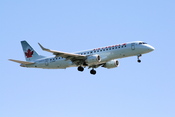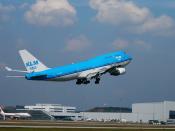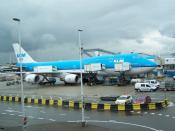?Computer Contributes To 747 Tail Scrape.? Introduction On 19th February 1996, an Air Canada Boeing 747-400 Combi aircraft scraped its tail along the runway when taking off from Toronto Airport, Canada. The aim of this report is to outline the events that took place, to establish the cause of the accident and to examine the system failures that led to it.
Outline Of Events The Boeing 747-400 Combi aircraft (the Combi aircraft is one that is intended to carry cargo on the main deck behind the passenger compartment) was scheduled to depart from Toronto International Airport at 08:45 on a non-stop flight to Vancouver International Airport.
The loading of the aircraft was a routine procedure, with its planning calculated using the Automated Load Planning Air Canada (ALPAC) application. However, during loading, six of the seven pallets placed in the cargo hold areas (i.e. the forward and aft hold areas which are situated under the main deck cargo area) were seen to exceed their height restrictions and had to placed in the main deck cargo area.
The ALPAC application was used to calculate weight and balance information for the aircraft and its cargo of 19,782kg (well within safety limits) and this was passed on to the flight crew. The data was then entered into the flight computer, which calculated the take off speed and the stabiliser trim, which both appeared to be within the operational limits of the aircraft. The aircraft was cleared for take off at 09:51 and all take off procedures were performed in accordance with Air Canada standard operating procedures.
Information obtained from the flight data recorder showed that the nose of the aircraft started to pitch up slowly at approximately 120 knots indicated airspeed (KIAS) without any movement of the elevators. At approximately 134 KIAS, when the...


